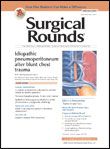Study Finds Improved Surgical Care for Primary Hyperparathyroidism
Since removing the abnormal glands through parathyroidectomy (PTx) is the sole curative intervention for primary hyperparathyroidism (PHPT), a team of researchers from the Section of Endocrine Surgery at the UCLA David Geffen School of Medicine in Los Angeles recently tracked trends in the frequency and quality of PTx.

Since removing abnormal glands through parathyroidectomy (PTx) is the sole curative intervention for primary hyperparathyroidism (PHPT), a team of researchers from the Section of Endocrine Surgery at the UCLA David Geffen School of Medicine in Los Angeles recently tracked trends in the frequency and quality of PTx.
For their large study published online in the Annals of Surgery, the researchers examined data culled from the California Office of Statewide Health Planning and Development on patients who underwent PTx between 1999 and 2008. The study authors categorized hospitals by case volume — from a very low 1-4 surgeries per year, to a very high 50 or more operations per year — specifically analyzing complication rates and the percentage of cases that required reoperation.
While the database included a total 17,082 cases, the investigators noted only 990 PTx operations were completed in 1999, while 2,746 were completed in 2008 — a 177% increase in annual case volume. The researchers also reported a similar 147% increase in the per capita PTx rate over the 10-year study period.
According to the authors, PHPT patients were more than 3 times more likely to undergo PTx at a high-volume hospital, since “the proportion of cases performed by very high-volume hospitals increased from 6.4% (in 1999) to 20.5% (in 2008).” Still, the complication rates for PTx were inversely related to case volume, as very high volume hospitals reported a 3.9% rate, compared to very low volume hospitals that recorded a 5.2% rate. Overall, the complication rate for PTx declined from 8.7% in 1999 to 3.8% in 2008.
The researchers found 363 PHPT patients required reoperation, the rate of which also inversely related to hospital volume, though it “increased from 0.91% to 2.73% during the study period.” Nevertheless, the authors concluded their results augmented the evidence of progress in safety and quality across surgical care for PHPT.
“Surgery for PHPT has grown safer and more common over time, (and) high-volume centers have lower rates of complication and reoperation,” they wrote.
